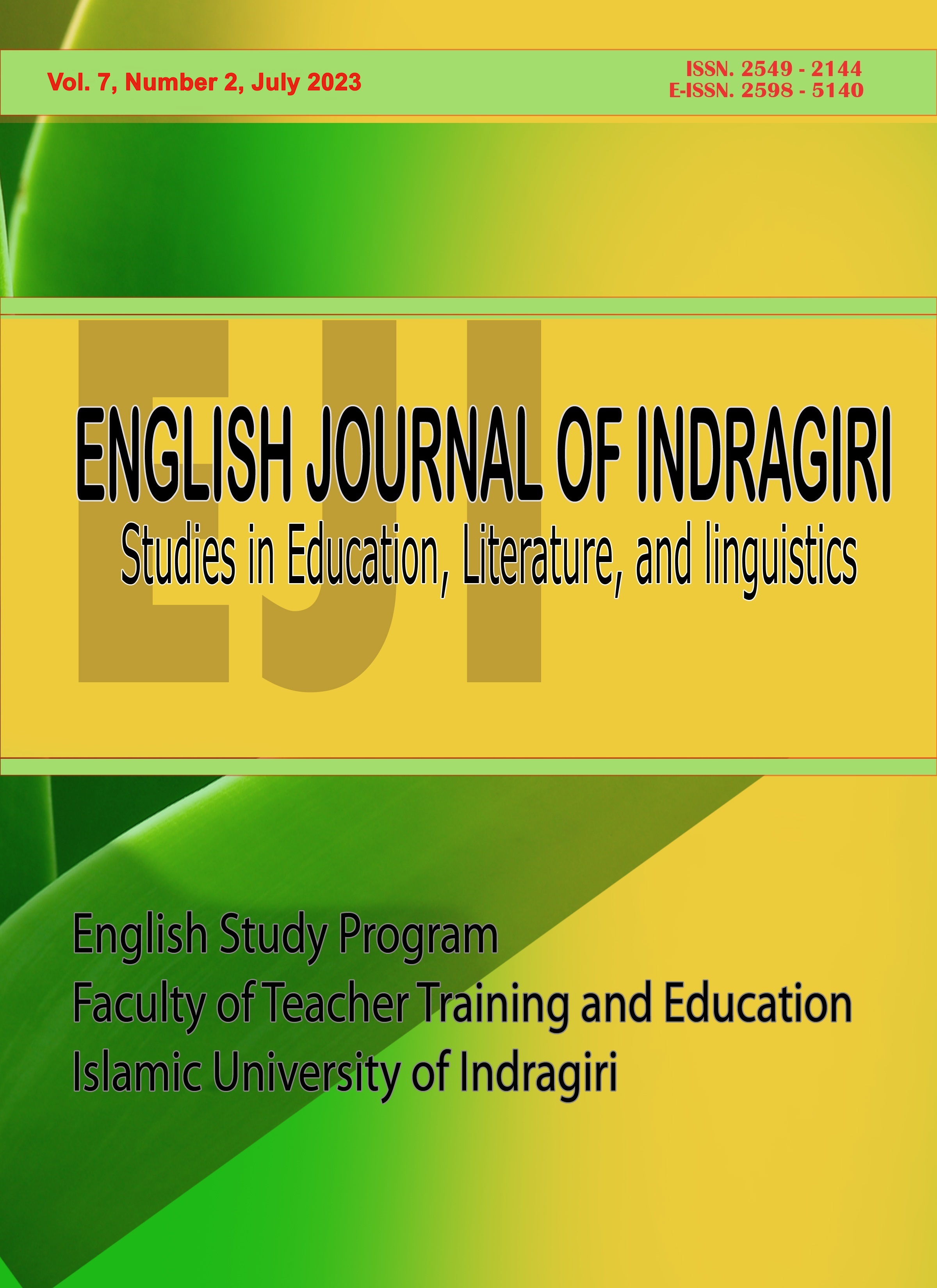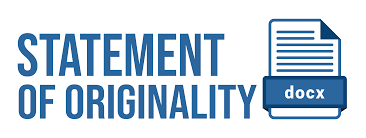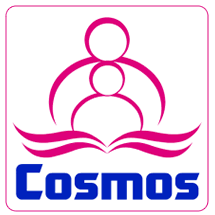TEACHERS’ PERCEPTION ON THE USE OF MOODLE APPLICATION IN ENGLISH AS FOREIGN LANGUAGE (EFL) ONLINE LEARNING
DOI:
https://doi.org/10.61672/eji.v7i2.2583Keywords:
Teachers’ Perception, Moodle Application, EFL Online Learning.Abstract
The aim of the current study is to explore teachers' perception of the use of Moodle applications in online learning of English as a foreign language (EFL).This is case study research with three English teachers in vocational high school 1 Indramayu as participants. They used Moodle applications in teaching online learning for three semesters. In order to obtain teachers’ perception of the use of the Moodle application in teaching online, interviews were used to gain the data, and it was analyzed qualitatively. The result showed that most teachers had a positive perception towards using the Moodle application in teaching online learning. It helped the teachers to be more creative in delivering the materials because many options or menus can be used. It also makes the teachers more active in using technology. The teachers also agreed that online learning, especially Moodle application, was important for students. The students can easily access any resource to support the material from the teachers. The school and teachers can also monitor and control students’ activities during the teaching-learning process. However, for further research, it is suggested to investigate other different applications that are used by teachers in the teaching and learning process, whether it is online or offline.
References
Al-Ani., W. T. (2013). Blended Learning Approach Using Moodle and Student’s Achievement at Sultan Qaboos University in Oman, Journal of Education and Learning. 2 (3). pp. 96-110.
Amandu, G. M., Muliira, J. K., & Fronda, D. C. (2013). Using Moodle E-learning Platform to Foster Student Self-Directed Learning: Experiences with Utilization of the Software in Undergraduate Nursing Courses in a Middle Eastern University. Procedia Social and Behavioral Sciences. 93. 667-683.
Ardinengtyas, A., & Himawan, A. N. (2021). Enhancing ELT Classroom Using Moodle E-learning during the Pandemic: Students’ and Teachers’ Voices. IJEE (Indonesian Journal of English Education), 8(1), 24-39. doi:10.15408/ijee.v8i1.20220.
Balluerka, N., Rodríguez, M., Gorostiaga, A., & Vergara, A. (2008). Development of a Questionnaire to Evaluate Pilot Schemes Adapting Undergraduate Courses to the Requirements of the European Higher Education Area (EHEA). European Psychologist 13, 222–226. DOI: 10.1027/1016-9040.13.3.222.
Bonk, C. J. (2004). The Perfect E-Storm: Emerging Technologies, Enhanced Pedagogy, Enormous Learner Demand, and Erased Budgets. London: Observatory on Borderless Higher Education.
Chourishi, D., Buttan, C. K., Chaurasia, A., & Soni, A. (2011). Effective E-learning through Moodle. International Journal of Advance Technology & Engineering Research (IJATER).
Chung, C., and D. Ackerman. (2015). Student Reactions to Classroom Management Technology: Learning Styles and Attitudes toward Moodle. Journal of Education for Business. 90 (4). 217-223.
Cole, J., & Foster, H. (2007). Using Moodle: Teaching with the Popular Open-Source Course Management System. O’Reilly Media, Inc.
Domenico, E. B. L d., & Cohrs, C. R. (2016). Moodle Platform for the Construction of Knowledge in Intensive Care: an Experimental Study. Acta Paul Enferm. 29 (4). 381-389.
Gunduz, N., & Ozcan, D. (2017). Implementation of the Moodle System Into EFL Classes.Near East University. Mersin. Turkey.
Ismanto, H. (2012). Pembuatan Aplikasi Perkuliahan Jarak Jauh Berbasis Web Menggunakan Moodle pada Universitas Musamus Merauke. Prosiding SNaPP2012: Sains, Teknologi, dan Kesehatan. 413-421.
Jacobs, P. (2013). The Challenges of Online Course for The Instructor. Research in Higher Education Journal. 1-16.
Kameron, S. E. (2006). A Review of Free Online Learning Management Systems (LMS). TESL-EJ, ISSN 1872-4303, vol.7, No.2, M-2, http://www-writing.berkeley.edu/TESL -EJ/ej26/m2.html.
Nedeva, V. (2005). The Possibilities of E-Learning, Based on Moodle Software Platform. Trakia Journal of Sciences. 3 (7). 12-19.
O’Connor, S., & Ross, A. (2010). WebCT role-playing: Immediacy versus e-mediacy in learning environment. Learning Environment Research, 183-201.
Prosser, M., Martin, E., Trigwell, K., Ramsden, P., & Lueckenhausen, G. (2005). Academics’ Experiences of Understanding of Their Subject Matter and the Relationships of this to Their Experiences of Teaching and Learning. Instructional Science 33, 137–157. Springer. DOI: 10.1007/s11251-004-7687-x.
Sinaga, R. R. F., & Pustika, R. (2021). Exploring Students’ Attitude towards English Online Learning Using Moodle during Covid-19 Pandemic at SMK Yadika Bandarlampung. Journal of English Language Teaching and Learning, 2(1), 8-15.
Terherst, A. (2005). New System Moodle More Effective.
Vernon, M. (1987). The Psychology of Perception. Middlesex: Penguin Books.
Wu, W. S. (2008). The Application of Moodle on an EFL Collegiate Writing Environment. Journal of Education and Foreign Languages and Literature. V. (7). 45-56.
Downloads
Published
Issue
Section
License
Copyright (c) 2023 Atikah wati, Indra Yoga Prawiro, Maulida

This work is licensed under a Creative Commons Attribution 4.0 International License.




















